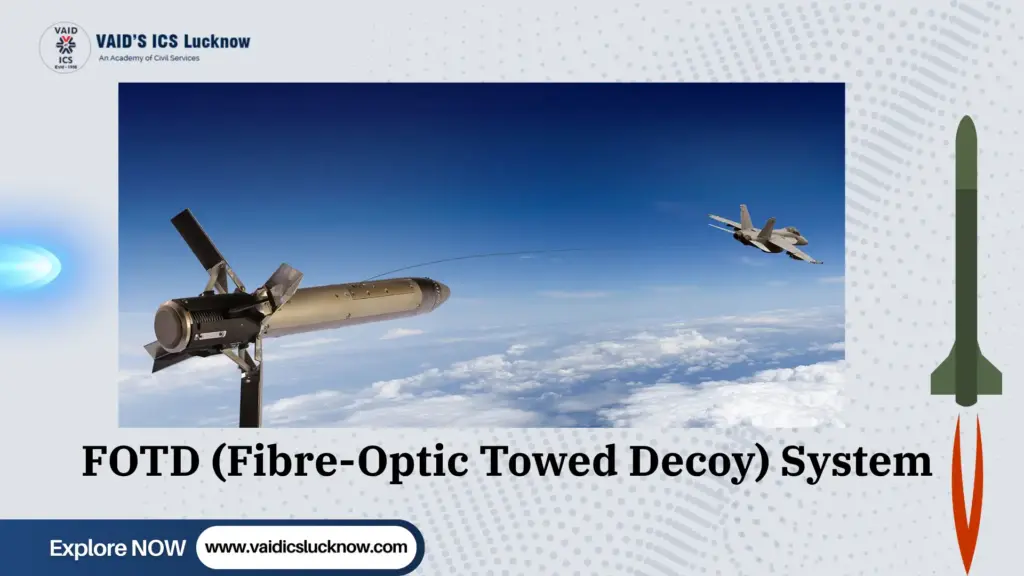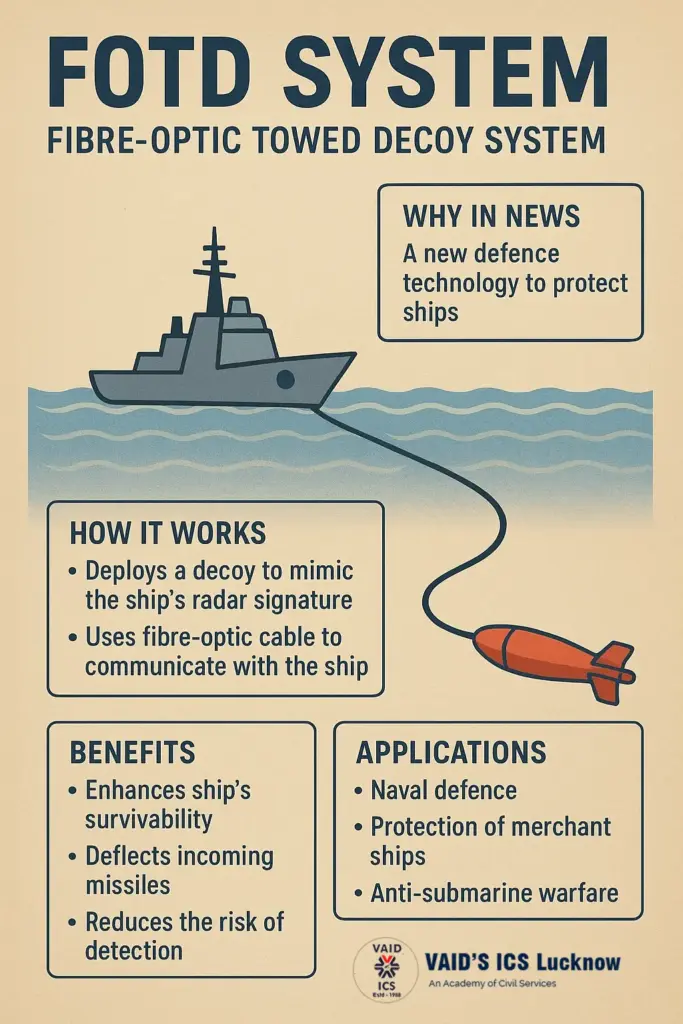August 25, 2025
FOTD (Fibre-Optic Towed Decoy) System
why in the News?
- With modern warfare becoming increasingly precise, the use of deception methods such as decoys is crucial for safeguarding aircraft, tanks, and naval vessels.
- India reportedly used the X-Guard Fibre-Optic Towed Decoy (FOTD) system on Rafale jets during Operation Sindoor, confusing Pakistan’s J-10C fighters and their long-range missiles.
- The Indian Navy (e.g., INS Karanj) also employs torpedo decoy systems, while the Indian Army recently sought tank decoys to counter drones and missiles.
Significance of FOTD:
- How it works: A 30-kg reusable unit is deployed about 100 meters behind the aircraft, imitating its radar and electronic profile.
Capabilities:
- Replicates the aircraft’s radar cross-section (RCS), velocity, and jamming signals.
- It works in combination with the Rafale’s SPECTRA electronic warfare suite to provide a layered defense system.
- Misleads both human operators and advanced tracking systems.
Impact:
- Protects expensive platforms like Rafale jets.
- Wastes enemy missiles and creates confusion.
- Enhances survivability in contested airspaces.
Applications by Other Nations
Europe:
- Leonardo’s BriteCloud (used on Eurofighter Typhoons, Gripen-Es, and some F-16s).
U.S.:
- Raytheon/BAE AN/ALE-50/55 towed decoys (used on F/A-18E/F Super Hornets).
- Nulka is an autonomous, rocket-powered decoy developed for naval ships to mislead and distract incoming radar-guided missiles.
Ukraine:
- Uses wooden and 3D-printed decoys of artillery, radar units, and missile systems to mislead Russian drones and strikes.
Russia & China:
- Inflatech creates decoys that mimic tanks, artillery, or missile systems by replicating radar and thermal signatures.
- China invests in camouflage and deception systems for both ground and naval forces.
U.S. & NATO:
-
- Also experiment with drone-mounted decoys to spoof radar and exhaust enemy missile stocks.
What is Deception technology?
Deception technology is a cybersecurity method that protects systems by luring attackers away from genuine assets and directing them toward decoys or traps. These decoys replicate authentic servers, applications, and data, tricking intruders into thinking they have breached valuable resources, when in fact they have not. The technique helps reduce potential harm and safeguard an organization’s critical systems.
Organizations rarely treat deception technology as their main cybersecurity approach. The primary aim of any security framework is to block unauthorized access, but deception tools play a crucial role after a potential breach. By luring attackers toward decoy data and credentials, enterprises can safeguard their genuine assets.
October 6, 2025
September 24, 2025
September 23, 2025
September 22, 2025


